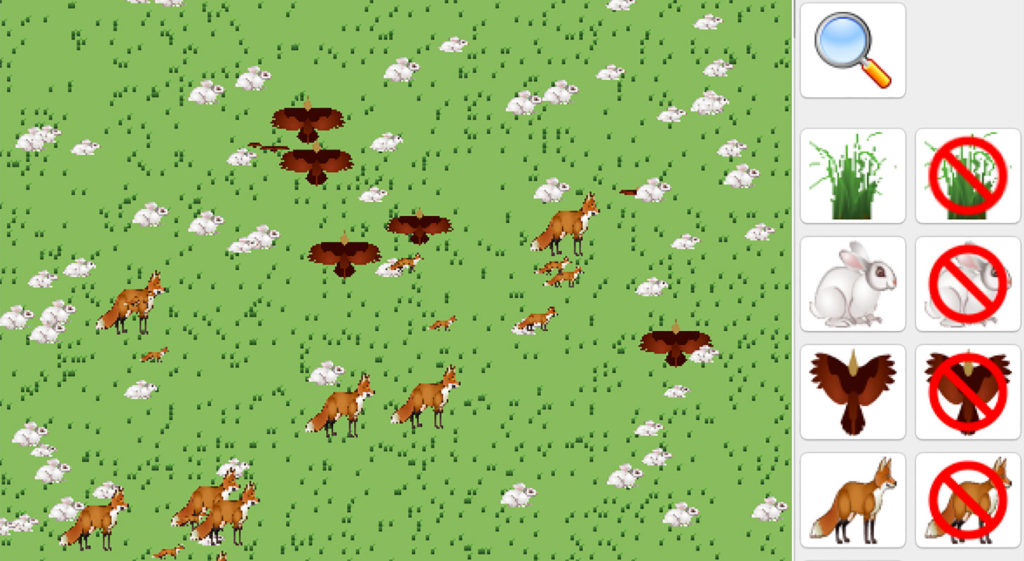Evolution is a particularly daunting subject to teach and to understand. The evidence for it is indirect and the model rests largely on phenomena that cannot be directly observed, including some that are poorly understood to this day. A research-based set of curriculum materials aimed at upper elementary and middle school students can help.
We are happy to announce the release of our updated evolution curriculum with enhanced support for remote learning.

In “Experiment with Ecosystems,” students construct and conduct their own experiments with ecosystems comprising grass, rabbits, and up to two predator species: hawks and foxes.
The curriculum, developed through the National Science Foundation-funded Evolution Readiness project, employs interactive simulations to help students learn the basics of Darwin’s model of natural selection as the process primarily responsible for evolution. A series of progressively more complex simulations are embedded in scaffolded activities, allowing students to explore the connection between variations, adaptations, the interdependence of species, and the results of environmental pressure on populations over time. The activities have been converted from their original Java source code to run on a web browser, making it easy for students to use a range of devices to access the materials (Chromebooks, iPads, etc.) from school or from home.
The full curriculum is available for free and includes ten online and five hands-on activities that address the Big Ideas in Evolution. The first five online activities focus on a model plant species and allow students to experiment with how slight variations in organisms can enable them to survive in different environments. In this initial sequence of activities, students discover that while traits are inherited by offspring from parents, there is also variation in offspring. In the second half of the curriculum, animal species and food webs are introduced. In these activities, students use a Virtual Ecosystem model to investigate the interconnections between the elements in an ecosystem, the predator and prey relationship, natural selection, and environmental pressures. Although these activities were designed to be taught in a sequence, individual activities can stand alone with teacher support.
We have added several enhancements to these activities. An interactive Teacher Edition embeds a layer of teacher tips, background information, discussion questions, and exemplar student responses within each activity, making it easy for teachers to prepare lessons ahead of time and access “just-in-time” support. Each activity also includes a lesson plan in the 5E format. A real-time Class Dashboard allows teachers to monitor student progress and performance, as well as give students feedback on their responses. And a validated online assessment is also available. We also provide guides and instructions for the supplementary hands-on activities, such as growing Fast Plants, an interactive food web, and a natural selection game.
Our research results showed that students who used our integrated curriculum outscored a baseline cohort of students, demonstrating the feasibility of teaching young students the fundamental concepts behind the theory of evolution. Learn more about the research and results.